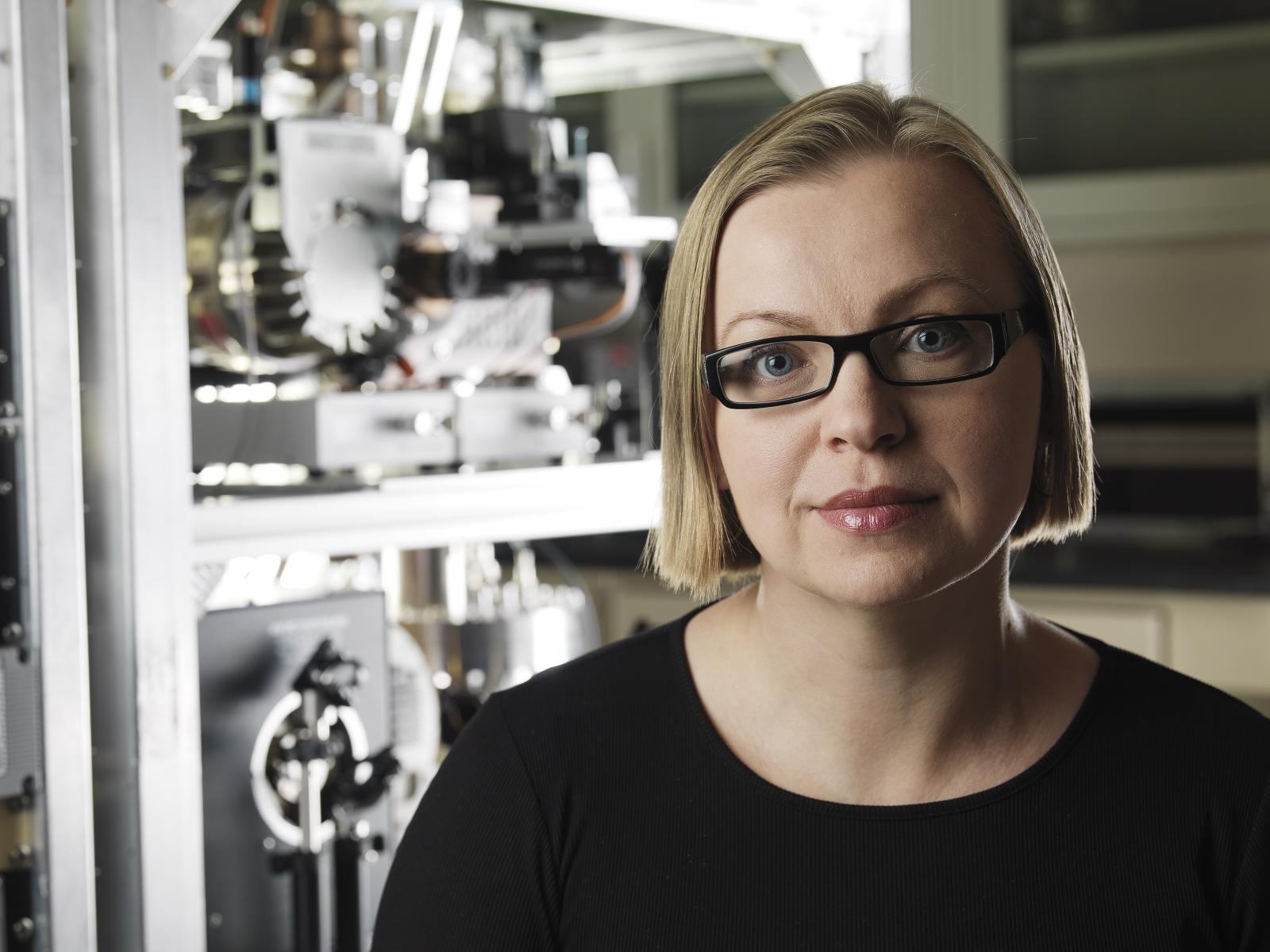Zelenyuk and Collaborators Receive Best Paper Award
Article selected as the best paper published in Spectrochimica Acta Part B in 2021

A paper written by a team of Pacific Northwest National Laboratory staff, including Alla Zelenyuk, received a “Best Paper” award.
(Photo courtesy of Alla Zelenyuk | Pacific Northwest National Laboratory)
A paper, titled “Real-time characterization of particles produced by laser ablation for analysis by inductively coupled plasma mass spectrometry,” led by Pacific Northwest National Laboratory (PNNL) Chemist Alla Zelenyuk and retired PNNL Chief Technology Officer David Koppenaal, was selected as the best paper published in Spectrochimica Acta Part B in 2021.
The paper describes a new application of a multidimensional single-particle characterization approach developed at PNNL and available at EMSL, the Environmental Molecular Sciences Laboratory, a Department of Energy Office of Science user facility at PNNL. The team applied their knowledge to develop a deeper understanding of how laser ablation (LA) conditions alter the properties of LA-generated particles when characterized by an inductively coupled plasma mass spectrometer (ICPMS). In this analysis method, a laser vaporizes a small portion of a sample, converting it into small particles with complex shapes and morphologies. The particles are then analyzed in an ICPMS, giving scientists information about their composition.
However, questions remained about how laser conditions affect the properties of generated particles and the associated ICPMS signals. Several studies have identified particle size as the most important attribute to take into account to obtain quantitative results with LA-ICPMS. But the PNNL team showed that particle size is not a straightforward concept, as the LA-generated particles have complex shapes.
Rather than treating these particles as spherical, the PNNL researchers used their one-of-a-kind single-particle analysis methods to comprehensively characterize multiple relevant particle properties in real-time. The team measured particle number concentrations, mass, mobility and vacuum aerodynamic diameters, composition, shape, and detailed morphology on both an individual particle level and as a function of LA conditions.
“We used our single-particle characterization techniques to address an old problem in a new way,” said Zelenyuk. “In the future, this approach could be extended to other samples or systems to optimize LA operating conditions, tailor the properties of particulates, and improve the quantification and sensitivity of ICPMS measurements.”
The best paper recognition comes with a presentation slot at a symposium honoring Spectrochimica Acta Part B awardees during the SciX 2022 conference. Koppenaal will present the team’s results at the special session in October.
“It’s very gratifying to receive this award and present what will likely be my penultimate scientific paper at the SciX 2022 award session later this year,” said Koppenaal. “It was wonderful to have worked with a great team on this project!”
Spectrochimica Acta Part B is a scientific journal that covers spectroscopy, with a specific focus on atomic spectroscopy, mass spectrometry, and X-ray spectroscopy. It publishes manuscripts on topics ranging from instrument development, to fundamental spectroscopic principles, and applications-based work.
The instruments described in this story are available for use by members of the scientific community, regardless of nationality or institutional affiliation, at EMSL following a peer-review process and successful acceptance of a research proposal. For more information and to submit a research proposal, visit www.emsl.pnnl.gov/proposals. To view a full list of instruments, visit www.emsl.pnnl.gov/science/instruments-resources.
Published: July 13, 2022